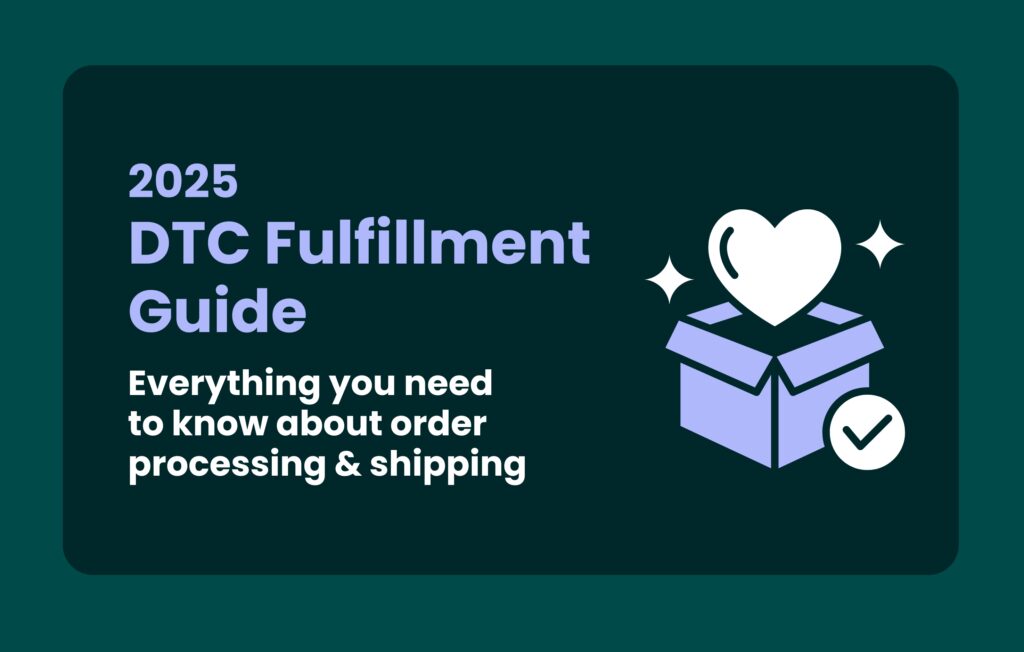When it comes to order fulfillment, it’s no secret that the proper selection and management of inventory is crucial to the success of any brand. But as any merchandiser or inventory manager knows, managing inventory is a delicate balancing act. You need enough stock on hand to meet shopper demand, but not so much that it costs you.
Upgrading to a technology-driven inventory solution, such as a perpetual inventory system, may be exactly what your business needs. This upgrade will help avoid stock-outs, ordering in excess, and other costly inefficiencies.
So, is a perpetual inventory system the right inventory management software solution for your brand? In this post, we’ll answer the following questions to help you make a more informed decision:
- Why is inventory management so important?
- What is a perpetual inventory system?
- How does a perpetual inventory management method really work?
- What are the potential advantages of this type of inventory management software?
- What are the differences between perpetual inventory and periodic inventory systems?
Why is inventory management so important?
Let’s review why proper inventory management is so important. Managing your inventory well is critical in the ecommerce space. This is true for a variety of reasons, including:
- More accurate stock counts: Greater accuracy allows for more financial transparency and reduced risk of overselling, overstatements (phantom inventory), and missing stock.
- More meaningful insights: Your teams can use inventory information to develop business insights. You identify trends, predict demand, inform marketing decisions, and more with these insights.
- Savings on warehousing costs: Proper inventory management can help brands avoid paying for more warehousing costs than are necessary, including the costs of storage, labour, insurance, and more.
- Save time and resources: Your team can spend less time doing inventory management tasks such as locating missing stock and recounting stock.
- Better order fulfillment and customer experiences: Accurate and organized inventory management can lead to a better order fulfillment process that’s free of delays and stockouts.
What is a perpetual inventory system?
A perpetual inventory system is a type of accounting practice that uses software to continually update your record of goods in real-time rather than periodically (hence “perpetual”). It works to immediately track sales and inventory levels based on your records (purchases and shipments) instead of tracking stock based on periodic, manual counts of your physical inventory.
The cost of goods sold (COGS) updates in real time. Technology automatically sends updates to a central database once the merchandise sells. This allows for integration with any of your internal teams, including sales, customer support, accounting teams, and any other team that could benefit from access to up-to-date, accurate inventory information.
Another way to think of this management system is as the “automatic” version of inventory management, compared to the periodic management system, which would be the “manual” version. Theoretically, this automatic system doesn’t need to be manually updated or adjusted like a periodic system. The exception is in cases of loss, damage or theft.
Why are brands moving towards perpetual inventory systems?
This modernized, tech-enabled inventory management method is becoming increasingly accepted by retail and fulfillment center partners. The widespread use of barcode scanning and RFID technology, in addition to the relatively new capabilities of cloud software, have made the perpetual inventory system a more natural fit for more brands. If the technology exists to expedite and automate the tracking of the stock you have on hand, why not use it?
And while a tech-driven inventory process may sound like a complicated operation, it’s more streamlined than you think. This automatic system performs calculations without any human intervention. It handles a large portion of your company’s inventory management responsibilities in a few simple steps.
How does a perpetual inventory system work?
Perpetual inventory management software goes through the following process in real-time whenever products are received or purchased. It starts right from the point of purchase:
Step 1: Gather information at the point of sale
The first step that triggers an update to the inventory system happens at the point of sale.
Barcode scanning technology or radio frequency identification (RFID) provides the necessary sale information that the inventory software needs to update its records. This happens at the point of purchase. Your website or ecommerce platform gathers this information and applies a debit to the inventory system immediately at the point of sale.
Step 2: The cost of goods sold (COGS) is updated
The COGS recalculates as the inventory system updates to reflect the sale information. COGS is calculated in this inventory system as follows:
Beginning Balance of Inventory
+
Cost of Inventory Purchases
−
Cost of Ending Inventory
=
Cost of Goods Sold
Step 3: Reorder points are updated
The inventory management software adjusts your reorder points constantly, as well. In order to keep the right amount of inventory, the perpetual system will update your reorder points when necessary, using the following formula:
Average Daily Sales x Lead Time (The time between ordering and receiving stock)
+
Safety Stock (Max daily orders x Max lead time) – (Avg. daily orders x Avg. lead time)
=
Reorder Point
Step 4: Stock is reordered automatically when necessary
The perpetual inventory software will automatically generate a new purchase order once merchandise hits its reorder point. This keeps your inventory accurately stocked according to historical data. This allows your inventory to be adequately stocked with what you’ll most likely need according to the data. At the same time, you avoid paying unnecessarily for warehousing costs since you don’t store too much product.
Step 5: New products are added to the inventory system
A perpetual inventory system automatically updates with the new product information when new inventory is received and scanned by warehousing staff. The new stock can be available for purchase in your system right away. Thus continuing the cycle of inventory with minimal human intervention or calculation!
To sum up: A perpetual inventory system works by collecting data when stock is received or sold to automatically update stock counts. This almost entirely eliminates the need for periodic, physical counts of your inventory.
What is the difference between a perpetual and periodic inventory system?
Periodic inventory systems update at the end of an accounting period rather than after each sale and purchase. This record updates after a physical count of all the inventory. Organizations do stock counts as often as once a month, or as infrequently as once a quarter. Some companies even do counts annually.
Because these counts happen more infrequently, they will never be perfectly up-to-date. Plus, this system is susceptible to human error.
To manually calculate the cost of goods sold, you need this inventory data. You can calculate this using either:
- A first-in first-out (FIFO) method
- A last-in first-out (LIFO) method
- The weighted average of costs throughout the accounting period
The periodic inventory management system was an early-adopted and commonly used method for manually keeping track of goods. But modernized, tech-enabled inventory systems prove to be more accurate and more efficient. And in this time of explosive ecommerce growth, perpetual inventory systems are arguably more beneficial now than ever.
As ecommerce and retail brands expand and scale up their inventory, they may find it increasingly complicated to track and replenish stock. If this is the case, you may require a more advanced approach to inventory management.
Consider this: A periodic system may be an inexpensive and relatively simple inventory method for a very small ecommerce business with a small amount of stock and just one or two sales channels. But imagine how time consuming periodic inventory management would be when employees must physically count thousands of pieces of merchandise regularly. As your inventory grows along with your business, moving towards a tech-driven, perpetual inventory system just makes more sense.
What are the advantages of a perpetual inventory system?
A perpetual inventory system offers a wide range of benefits for brands of any size. We can assess the advantages of a perpetual inventory system by holding them to the standards we outlined earlier. Here are some reasons why inventory management is so important:
More accurate stock counts: Continual, automatic updates equal more accurate inventory information for you and your teams. Brands using a perpetual system won’t have to worry about inaccurate stock counts and miscalculations any longer.
More meaningful insights: The perpetual inventory method leaves a detailed paper trail behind, helping your teams develop better insights around sales, trends and potential opportunities for optimization.
Savings on warehousing costs: A perpetual inventory system automatically calculates reorder points and reorders your inventory, keeping it at optimal levels where you have adequate stock but not so much that you are paying unnecessarily for warehousing costs, such as the costs of labour, storage, insurance and more.
Save time and resources: With your stock maintained in an organized manner at the optimal levels, and without the need to physically count inventory levels in a periodic system, you and your team have more time and resources to spend on other important areas of your business.
Better order fulfillment and customer experiences: Organized inventory means your team is better set up for a successful order fulfillment process that’s free of delays and stockouts.
Are there any disadvantages of a perpetual inventory system?
The benefits of switching to a tech-enabled inventory system aside, there are considerations that brands need to know about. The initial cost of investment is arguably the most important of the considerations. While this investment often ends up paying for itself, the starting costs can be intimidating. In addition, no system is entirely perfect, and one that uses internet-based cloud software is just as susceptible to technology disruptions as any other kind of software.
Final thoughts on the perpetual inventory system
Overall, the advantages of an updated, modernized inventory system such as the perpetual inventory system outweigh the disadvantages. While they don’t come cheap and are certainly not perfect, they are far more beneficial than manual methods which, as we’ve covered, are time-consuming and highly susceptible to error.
All in all, brands with diversified sales channels and/or inventory will find that a perpetual system is an investment worth making.






